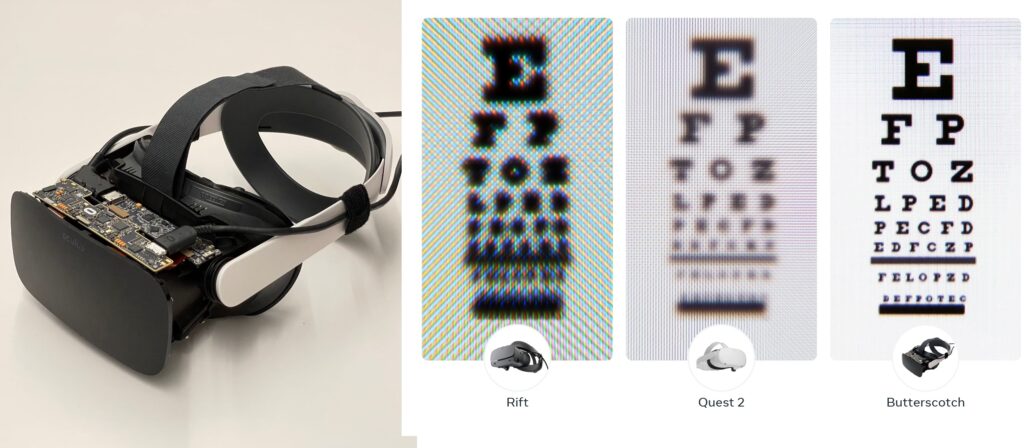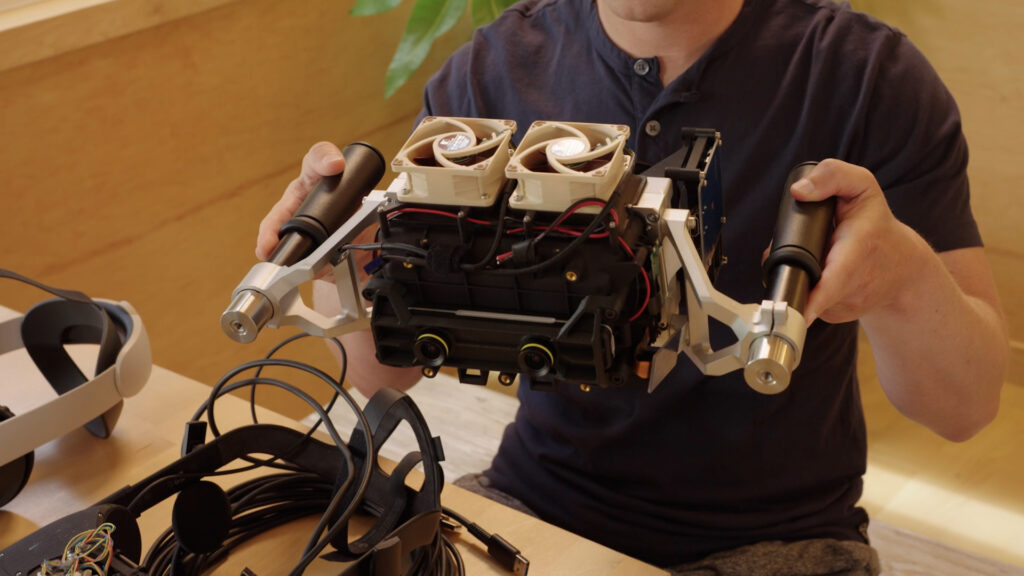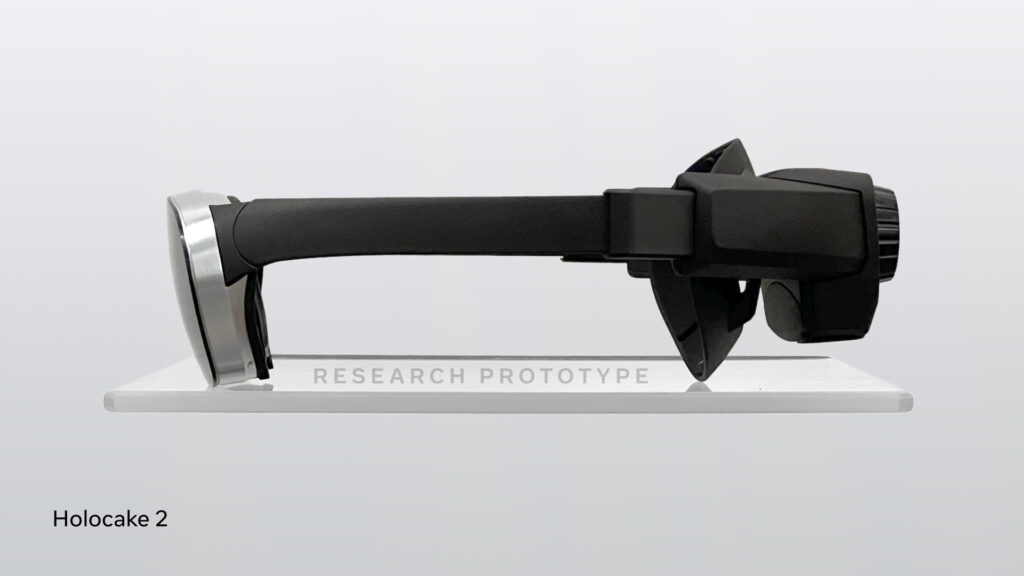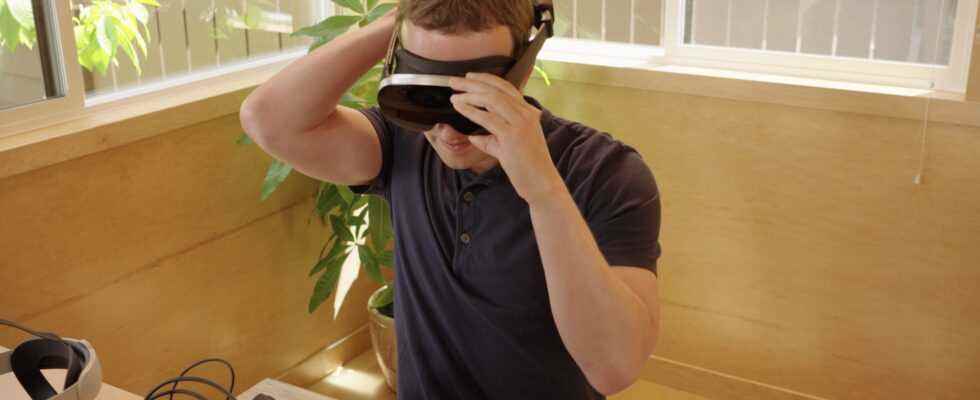During a round table with several journalists, Mark Zuckerberg and other representatives of Meta presented several prototypes of virtual reality headsets. The company has several ideas to make its “metaverse” as realistic as the real world.
By the end of the year, Meta should unveil a new virtual reality headset that is much more efficient than the affordable Quest 2. This project, which responds to the name of Cambria, should focus on mixed reality, thanks to powerful color cameras. We should be able to see the real world through, to superimpose virtual objects on the real. It is also this direction that Apple should take in 2023 with its own headphones, the other giant about to tackle these very particular devices.
Pioneering virtual reality thanks to the takeover of Oculus in 2014, the company that was once known as Facebook is convinced that these devices will one day be in every home. To convince the world that it is really working on these subjects, Meta invited the press on Thursday June 16, 2022 to a presentation of several prototypes of VR headsets, in the presence of Mark Zuckerberg. Meta’s message is quite simple to sum up: virtual reality has flaws today, it won’t have any tomorrow.
Professor Zuckerberg’s course in optics
Despite our great interest in Meta, virtual reality and science in general, we must admit that we did not expect such a level of technicality for a briefing in the presence of the media. For just over an hour, Mark Zuckerberg and his teams, including Michael Abrash, the scientist in charge of Meta’s laboratories, presented to us various projects aimed at making virtual reality better. At least Meta has the merit of admitting that the technology has a lot of flaws and, with supporting diagrams, attempts to scientifically explain why. Now he has to deal with these problems.
Several major problems were mentioned by Mark Zuckerberg, such as that of the definition of the screens in front of our eyes. Even with more pixels than those of a smartphone, they face two major problems: their proximity to the eyes necessarily constrains them to a lower resolution and the field of vision is wider. The Butterscotch project, a prototype VR headset, solves these problems. Meta is not yet able to produce it in large quantities, but resolution will soon no longer be an issue. “In the next few years, we think there is a great chance of reaching this level” explains Mark Zuckerberg. Butterscotch is however far from ready, the product is very heavy and very large. It only allows experimenting with “retina” screens.

The second flaw of VR highlighted by Mark Zuckerberg concerns the lack of depth of field. To put it simply, the size of your pupil changes according to the distance between your eyes and the object you are looking at (this is also how a camera works). In virtual reality, replicating this optical phenomenon is currently impossible. Even if the object you are looking at in 3D recedes, the screen in front of your eyes remains at the same distance. The human brain doesn’t get tricked and your pupils stay the same size all the time, which makes VR necessarily less realistic than the real world (and more tiring). This explains why sometimes VR becomes blurry in certain areas.
How to change that? The ambitious Mark Zuckerberg has an idea: we must fool the brains of users. Several prototypes set up by Meta embed mechanical screens which, always very vulgarly, can move a little to make your brain believe that what you are looking at is moving forward or backward. VR then becomes more comfortable and what we watch is more realistic. This would greatly reduce distortion, butMichael Abrash prefers to warn, “studying distortion takes a lot of time”. Even though Meta has been studying the phenomenon since 2015, the solution is not yet there. There is currently no prototype with this technology, just a simulator.

Starbust: a really big, really bright helmet
The helmet you see a little further down in this article is a prototype called Starbust and, no, it’s not a helmet you want to put on your head. Mark Zuckerberg acknowledges this himself: “it is largely impractical”. Starbust is mainly there to serve as an example. It is “the technological route to take to make significant improvements”.
Starbust has a major particularity: its brightness can reach 20,000 nits, while the most efficient consumer screens today are around 1,000 nits. This extreme brightness has several advantages, such as the possibility of offering HDR processing superior to that of a television. Even if it is unlikely that a helmet will ever rise so high, Starbust allows you to push the limits of screens. The other element put forward by Zuckerberg is eye tracking to, precisely, ensure that a small movement does not distort the whole VR.

A prototype that we imagine ourselves wearing
Finally, the latest prototype put forward by Meta is called Hololake 2 (it is also in the first illustration of this article, on the head of Mark Zuckerberg). For once, we are extremely convinced. Its finesse is such that the acceptability of VR headsets suddenly seems possible to us. “If this product comes out, it will be a game changer for the world of virtual reality” said very proudlyMichael Abrash. Mark Zuckerberg welcomes his side to have a more complete prototype than a marketable helmet, but much easier to wear.

When will a helmet the size of the Hololake 2 be ready? It’s hard to say. Mark Zuckerberg is nevertheless convinced of one thing: “It will lead us to a future where computers are central to people’s lives.” The Hololake 2 may not have ultra-bright screens or an anti-distortion system, but its portability makes it attractive. We are far from the augmented reality glasses imagined by Facebook a few years ago, however this concept has at least the merit of being realistic in the medium term.
What technologies in Cambria?
Asked by Numerama,Michael Abrash told us that the technologies presented in June 2022 are not ready for commercialization. So it’s unlikely to have any big surprises with Cambria, although the headset should make considerable efforts on the quality and eye-tracking side. We now hope that after making us drool over the future of its virtual reality, Meta will not disappoint us with its next high-end headset. This exercise in transparency has the merit of being fascinating. Yet it can also make people realize how unready technology is today, even if people sometimes think the opposite.
